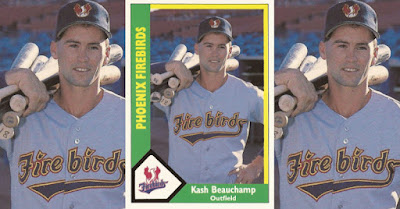Posts
Showing posts from December, 2011
Jeff Fischer made it up to the majors over two seasons
- Get link
- X
- Other Apps
Brian Fisher started and relieved over 7 majors seasons
- Get link
- X
- Other Apps
Beau Allred saw parts of 3 majors seasons with Indians
- Get link
- X
- Other Apps
Kash Beauchamp realized dream with pros, saw long career
- Get link
- X
- Other Apps
Tab Brown saw 3 minor league seasons, each with Braves
- Get link
- X
- Other Apps
David Miller saw 5 pro seasons, AAA with Braves, Rangers
- Get link
- X
- Other Apps
Armando Moreno got call to Pirates, didn't get in game
- Get link
- X
- Other Apps
Willie Smith returned from injury, made 8 majors games
- Get link
- X
- Other Apps











